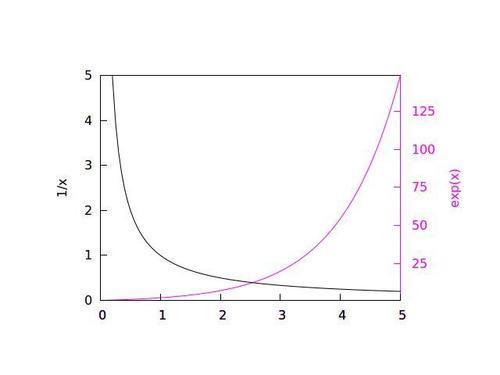We showed back in Chapter 1, Plotting Curves, Boxes, Points, and more, how to use two different y-axes when plotting two functions or datasets that have dissimilar ranges. We can make it easier to see which curve goes with which axis by using color.
In the following figure, two curves are colored (shaded in print) to match corresponding colors on the vertical axes with which they are associated. The axis labels are colored to match, as well. This makes it easy to match the curves with their y-axes without having to use arrows or legends.

The following script created the previous figure:
set multi set tmargin at screen .8 set rmargin at screen .8 set lmargin at screen .2 set bmargin at screen .2 unset key set tics nomirror set xrange [0:5] set border 8 set border lt 4 set y2tics 0,25,150 unset ytics set y2label "exp(x)" textcolor lt 4 plot exp(x) axis x1y2 lt 4 set border 7 set border lt -1 set ylabel "1/x" textcolor lt -1 unset y2label set ytics 0,1,5 set tics...



